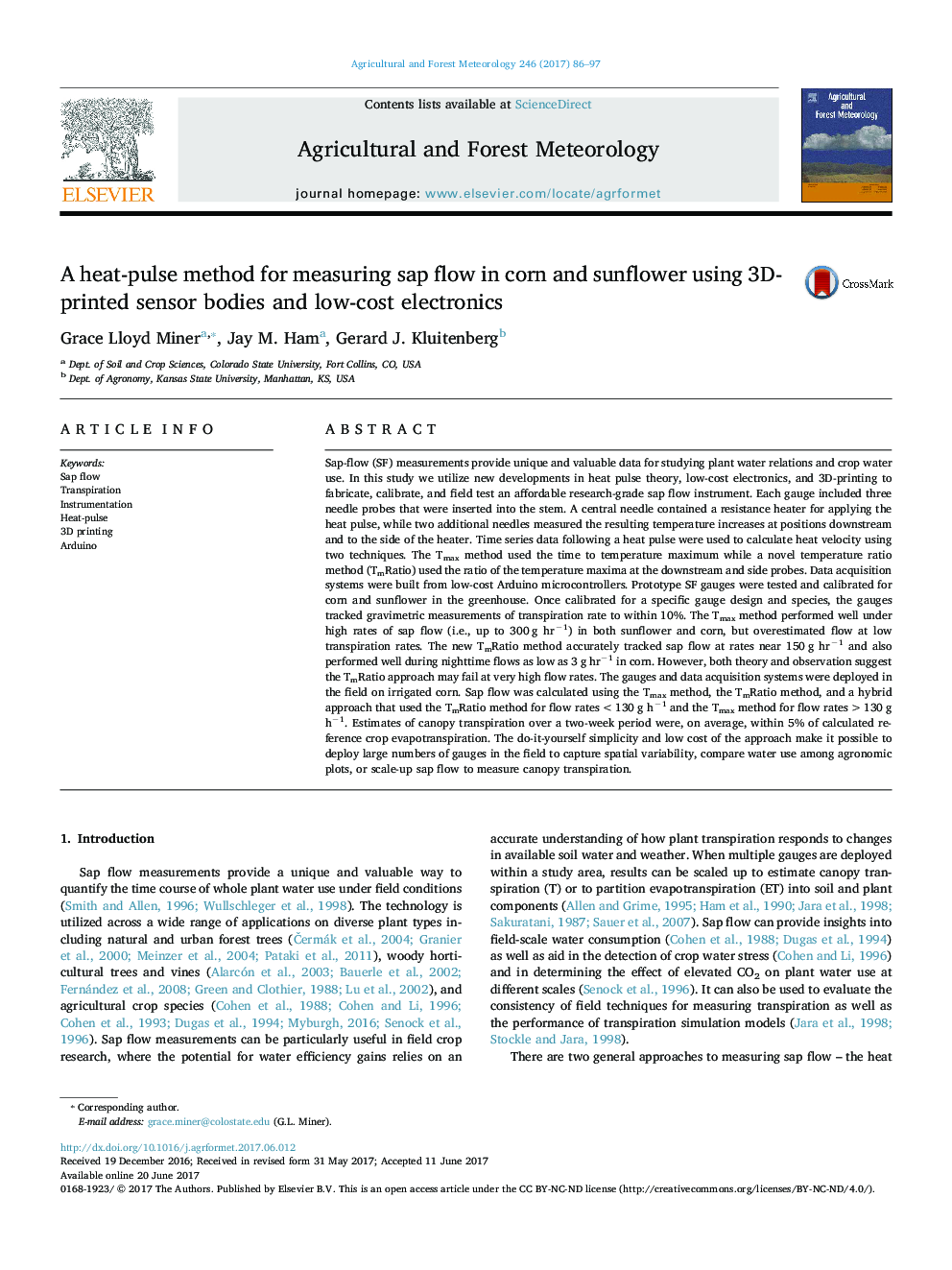| کد مقاله | کد نشریه | سال انتشار | مقاله انگلیسی | نسخه تمام متن |
|---|---|---|---|---|
| 6457696 | 1420855 | 2017 | 12 صفحه PDF | دانلود رایگان |

- Arduinos and 3D-printed gauges promote affordable open-source sap flow technology.
- New TmRatio heat-pulse method accurately measures transpiration in sunflower and corn.
- Scaled-up sap flow measurements in corn were within 10% of reference crop ET.
- Low-cost user-fabricated gauges are a good tool for estimating field-scale transpiration.
Sap-flow (SF) measurements provide unique and valuable data for studying plant water relations and crop water use. In this study we utilize new developments in heat pulse theory, low-cost electronics, and 3D-printing to fabricate, calibrate, and field test an affordable research-grade sap flow instrument. Each gauge included three needle probes that were inserted into the stem. A central needle contained a resistance heater for applying the heat pulse, while two additional needles measured the resulting temperature increases at positions downstream and to the side of the heater. Time series data following a heat pulse were used to calculate heat velocity using two techniques. The Tmax method used the time to temperature maximum while a novel temperature ratio method (TmRatio) used the ratio of the temperature maxima at the downstream and side probes. Data acquisition systems were built from low-cost Arduino microcontrollers. Prototype SF gauges were tested and calibrated for corn and sunflower in the greenhouse. Once calibrated for a specific gauge design and species, the gauges tracked gravimetric measurements of transpiration rate to within 10%. The Tmax method performed well under high rates of sap flow (i.e., up to 300Â g hrâ1) in both sunflower and corn, but overestimated flow at low transpiration rates. The new TmRatio method accurately tracked sap flow at rates near 150Â g hrâ1 and also performed well during nighttime flows as low as 3Â g hrâ1 in corn. However, both theory and observation suggest the TmRatio approach may fail at very high flow rates. The gauges and data acquisition systems were deployed in the field on irrigated corn. Sap flow was calculated using the Tmax method, the TmRatio method, and a hybrid approach that used the TmRatio method for flow rates <130Â g hâ1 and the Tmax method for flow rates >130Â g hâ1. Estimates of canopy transpiration over a two-week period were, on average, within 5% of calculated reference crop evapotranspiration. The do-it-yourself simplicity and low cost of the approach make it possible to deploy large numbers of gauges in the field to capture spatial variability, compare water use among agronomic plots, or scale-up sap flow to measure canopy transpiration.
Journal: Agricultural and Forest Meteorology - Volume 246, 15 November 2017, Pages 86-97